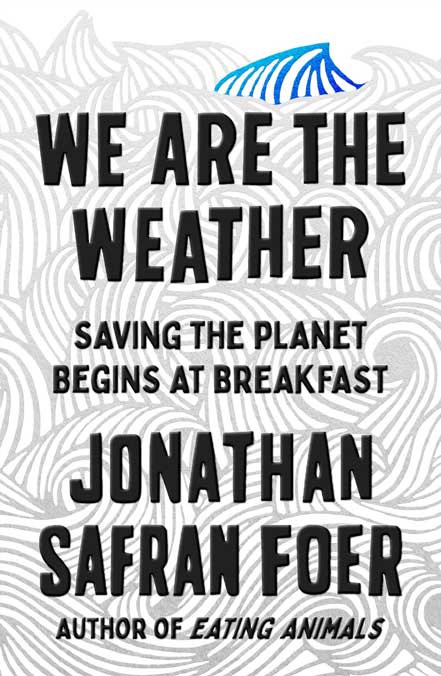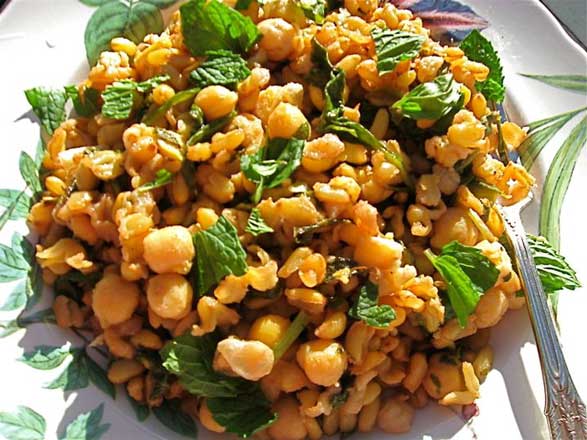Planet-Based for Life on Earth
Left out of the controversial beef’s-not-so-bad-for-you study is meat’s environmental impact. Because that’s not the story anyone wants to hear. Livestock production accounts for over 14% of greenhouse gas emissions. The issue isn’t about meat or personal health. It’s about life on earth. That’s a pretty compelling story.
I just participated at Reducetarian summit, a gathering of activists in veganism, climate change and animal rights, all of us coming together for the common and crucial goal of reducing meat consumption and with it, reducing climate change. At least I hope we’re coming together. This environmental crisis is not only overwhelming, as the summit’s keynote speaker Jonathan Safran Foer said, it’s not a good story, because despite what’s at stake — life as we’ve known it — it doesn’t seem to galvanize us into action.
Foer is a compassionate and thoughtful writer. For all that, he, like the rest of us, is human. Therein lines the problem. Rather than the climate change rallying cry I’d hoped for, We Are the Weather is a prolonged dialogue Foer has with his own conscience. He lays out many of the climate change stats you’ve already seen, and concludes, Wow, big problem. Still, I’m going to eat a burger now and again because I am human and frail and I hate myself for it.

There are steps all individuals can take to address climate change. A new study in Science concludes, “A vegan diet is probably the single biggest way to reduce your impact on planet Earth.”
I am vegan but very far from perfect. I’m failing an online course in the science of climate change. As a Miamian, I have been living with the reality of climate change — rising tides, devastating hurricanes and a cataclysmic loss of bird life. Feeling and seeing climate change hasn’t been enough to convince people and spur them to action. I wanted to be able to present the evidence using scientific terms. But trying to grasp the physics of the climate change models, the enormity and complexity of atmospheric alteration gives me brain freeze.
Like Foer, I’m more moved by narrative. I don’t like the way this one’s going. We Are the Weather, although elegantly written, fails to drive the action — and the actors (us) forward. We’re flawed —that’s how humans seem to be made. We can all commit to doing something, anyway. Failure to do so makes us complicit in the destruction of the only home we’ve ever known — try telling that story to your children.
Change, be it global or individual, is daunting. Lunch is easy. Everyone can choose plant-based meals. If not all the time, then, like Foer, sometimes, more often than not. Don’t call it plant-based, call it planet-based. Make that the story.
Instead of your usual default lunch, choose a veggie burger. Choose a hummus-stuffed pita. Choose grilled vegetable tacos dosed with guacamole and salsa. Choose a power bowl with a confetti of vegetables and a squirt of sriracha. And — most important — choose to talk about it.
Tell your friends, family and co-workers why you’ve committed to changing what you eat. Let people know you’re eating planet-based meals at least once a week because you’re part of the story. You play a role in the most epic struggle we’ve ever faced. Invite everyone to join you.
Eating one veggie burger won’t get us out of this crisis. But the reason behind doing so — mitigating climate change — might. That’s a tale we can all get behind, a story worth telling for generations to come.

It is possible to be all of the above — plant-based, organic, ancient grainy and accessible. Behold this recipe for kamut.
Kamut needs to be soaked overnight or at least several hours before cooking, so plan your life accordingly. This dish can be tarted up a million ways — swap the spinach for other vegetables in season — it’ll be lovely with the first asparagus of spring, if you can wait that long. Add some diced tempeh, garnish with pistachios.
Ingredients
- 1 cup KAMUT (sometimes sold as KAMUT berries)
- 3-1/2 cups vegetable broth, divided use
- 1 tablespoon olive oil
- 2 cloves garlic, minced
- 3 scallions, chopped
- 1 cup cooked chickpeas (roughly half a 15-ounce can)
- 1 lemon, juice and zest
- 4 ounces (3 cups) fresh spinach, chopped
- 1 bunch mint, chopped
- sea salt and fresh ground pepper to taste
Instructions
- Bring three cups of vegetable broth to boil in a large pot. Add rinsed and drained KAMUT. Stir and return to boil. Cover and reduce heat to low. Simmer KAMUT for 90 minutes — yes, alas, an hour and a half. But in that time, the KAMUT will have grown exponentially, aborbed all the liquid and the result will be a fabulous ancient whole grain with both charm and chew.
- Set KAMUT aside to cool slightly.
- Heat olive oil in large skillet over medium-high heat. Add garlic and scallions, stirring gently until vegetbles turn fragrant, about 5 minutes. Add chickpeas and KAMUT. Stir to combine. Reduce heat to medium.
- Squeeze in lemon juice, add chopped spinach by the handful, then add mint.
- Continue cooking for another 5 minutes or so, until KAMUT is heated through. Finish with a lavish addition of sea salt and fresh ground pepper.
- Keeps covered and refrigerated for several days. Flavor deepens over time.


The recipe calls for “3-1/2 cups vegetable broth, divided use,” but I only see 3 cups listed within the recipe directions. Where does the other 1/2 cup of broth come in, please?
Hi Mariah, Kamut can be thirsty. If when you mix in the lemon, spinach and mint towards the end of cooking, you find the mixture too dry, that’s where you can add the reserved 1/2 cup of broth. I’ll clarify the instructions. Please lmk how you like the recipe. Thanks!